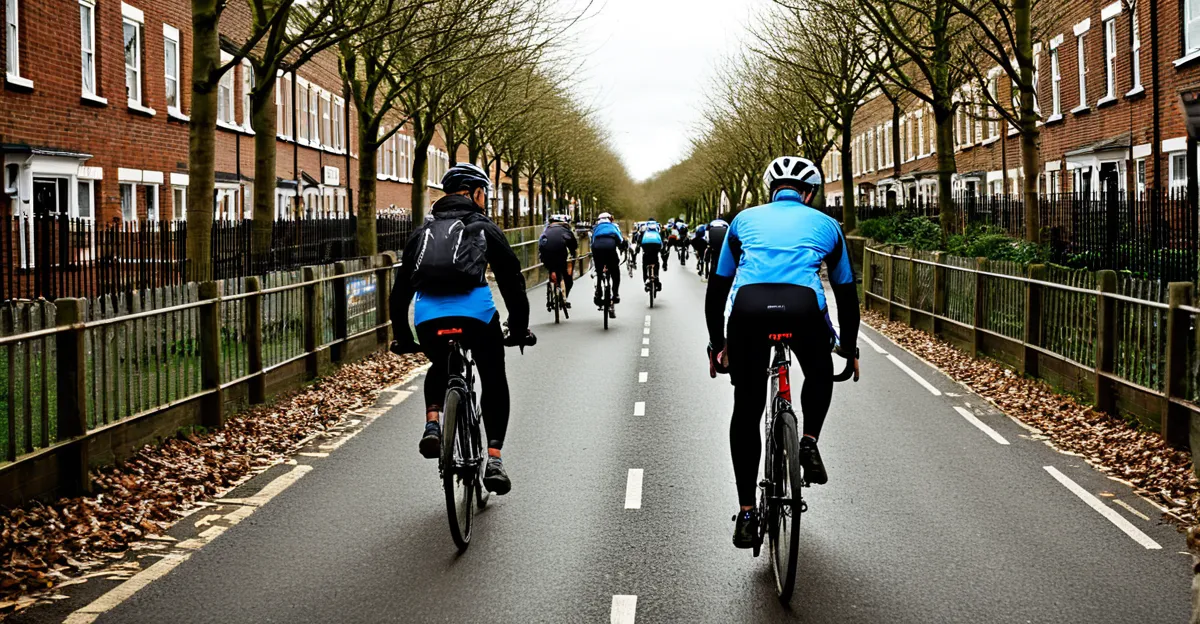Strategies for Overcoming Urban Development Barriers to Cycling
Urban cycling in the UK faces significant challenges rooted in inadequate infrastructure and complex urban design. Many cities suffer from cycling infrastructure limitations, including fragmented bike lanes and unsafe road crossings. These limitations deter potential cyclists, increasing reliance on cars and worsening congestion.
A critical urban development barrier is road space allocation prioritising motor vehicles over cyclists. Addressing this requires rethinking city layouts to create continuous, protected cycling networks. Solutions include dedicated cycle tracks separated from traffic and improved bike parking facilities.
Also read : Which UK Cities Are Leading the Charge in Promoting Urban Cycling?
Moreover, urban development trends such as densification and mixed-use zoning offer opportunities if integrated with cycling-friendly planning. Encouraging compact city designs reduces travel distances, making cycling a more convenient and attractive choice.
Innovative urban development solutions involve collaboration between city planners, local authorities, and communities. For example, implementing low-traffic neighbourhoods reduces overall vehicle presence, enhancing safety for cyclists. By systematically addressing UK cycling challenges through such measures, cities can create environments where cycling thrives, improving health and sustainability.
In the same genre : How Can Cycling Transform Your Mental Wellness in the UK?
Policy Gaps and Opportunities for Advocacy
Addressing challenges and driving change in UK cycling policy
Conflicts between cycling policy in the UK and existing urban development often stem from a lack of integrated planning. Many urban policies prioritise motor traffic, creating gaps that leave cyclists vulnerable. These policy gaps hinder safe, accessible cycling infrastructure, limiting the full potential of sustainable transport.
Effective advocacy strategies have proven pivotal in influencing government actions. Campaigns that highlight the direct benefits of cycling—such as reduced congestion and healthier communities—gain traction when backed by clear evidence and community engagement. For example, coordinated efforts by advocacy groups have pushed for dedicated bike lanes and revisions in traffic regulations.
Government initiatives increasingly reflect this shift, with departments collaborating with non-governmental organisations to develop comprehensive cycling plans. These partnerships can strengthen policy impact by aligning public resources with grassroots insights. To capitalise on these opportunities, advocates need to focus on clear communication and persistent engagement with policymakers, ensuring cycling remains a prominent component of urban transport strategies.
This collaborative approach presents a clear path forward to bridge current policy gaps and advance the cycling agenda in the UK.
Success Stories and Effective Models from the UK
Small and large urban centres across the UK have created impressive cycling success stories UK by addressing diverse development challenges. One key element has been the integration of cycling infrastructure into broader urban transformation plans. Cities investing in dedicated bike lanes and secure parking saw tangible boosts in cycling participation, demonstrating how thoughtful infrastructure shapes cycling communities.
Case studies cycling communities consistently reveal that effective models emphasize accessibility and safety. For example, well-planned routes linking residential areas with commercial zones encourage daily cycling for commuting and errands. Moreover, these initiatives often rely on key partnerships between local authorities, cycling advocacy groups, and transportation planners to tailor designs to community needs.
Such collaborations help deliver comprehensive solutions – from public bike hire schemes to educational campaigns, elevating cycling culture. The UK experiences highlight that overcoming initial obstacles like limited space or public scepticism is possible when cities commit to sustained investment and stakeholder engagement. These successes provide blueprints for other urban areas aiming to replicate proven strategies in cultivating vibrant, healthy cycling communities.
Actionable Recommendations for the Cycling Community
Driving change through collaboration and engagement
The cycling community engagement can be vastly improved by adopting targeted, actionable recommendations. First, grassroots and local cycling groups should organise regular community rides and workshops to raise awareness about cycling benefits and safety. These practical steps foster solidarity and attract new members.
Building strong, productive relationships with urban planners and officials is crucial. The cycling community must participate actively in city council meetings and public consultations. By presenting data-backed proposals and real-life examples of successful bike infrastructure, they can influence urban planning collaboration effectively. This includes advocating for protected bike lanes, traffic calming measures, and bike parking facilities.
To mobilise support, community leaders should leverage social media platforms and local events for outreach. Organising campaigns that highlight how cycling reduces traffic congestion and pollution can resonate widely. Educational initiatives targeting schools and workplaces also help foster a culture of cycling.
By combining grassroots actions, strategic partnership development, and awareness campaigns, the cycling community can create a powerful voice to shape more bike-friendly urban environments.
Expert Insights on the Future of Cycling in Urban UK
Understanding perspectives shaping tomorrow’s urban mobility
Urban planners and transportation experts consistently highlight that future urban cycling in the UK depends heavily on integrated city designs prioritizing sustainable transport planning. Expert opinions cycling UK emphasize the need for seamless connections between cycling lanes, public transport, and pedestrian pathways. This interconnected approach not only improves safety but also encourages more residents to adopt cycling as a primary mode of travel.
How will technological innovation support cycling infrastructure? Advanced materials for bike lanes, smart traffic signals responsive to cyclists, and real-time data apps all play pivotal roles. Experts predict that such innovations will reduce accidents and enhance convenience, making cycling more attractive despite urban density challenges.
Moreover, experts envision policies incentivizing bike-sharing schemes and urban redesigns that reduce car dependency. This evolution reflects broader environmental goals, addressing congestion and pollution in busy cities. Sustainable transport planning, combined with technology and supportive legislation, will likely shape a cycling-friendly future that benefits UK urban dwellers economically, health-wise, and environmentally.

